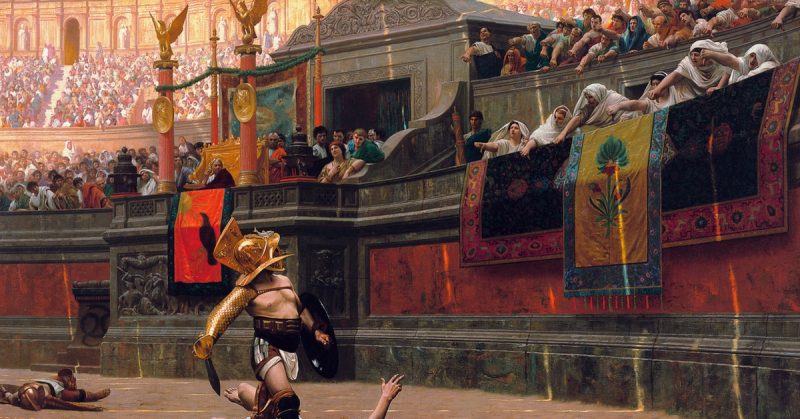The War of Spartacus was violent and disturbing. Gladiators and other slaves were fighting for what modern society views as the inalienable right to freedom. The Romans, meanwhile, feared for their lives as citizens were massacred in the heart of Italy. Just fifteen years after the Social War of Rome’s Italian allies, another rebellion erupted into a full-scale war.
When Spartacus initially escaped Capua, he led a force of mostly gladiators. Capua was a very major city just south of Rome and had plenty of slaves, both in the city and working the fertile fields of the region. These slaves and even some farmers and others looking for a better life joined the rebellion in droves.
The small policing force from Capua was easily overcome by the seasoned gladiators. The Gladiators were able to steal huge amounts of gladiatorial weapons and armor and added to it the military arms and armor of the small force sent against them. The region of Campania was a wealthy region full of wealthy vacation villas. The wealthy elite were robbed and often killed as the growing group of slaves moved through.
The slaves were soon holed up on the heights of Mount Vesuvius. Here they were somewhat besieged by a hastily assembled Roman army, possibly a militia of sorts. Here Spartacus showed off his ingenuity by having his best men rappel down an unwatched cliff and surprise the Romans at their flanks. The Romans were nearly all killed at the battle.
Spartacus moved off of Vesuvius and defeated more Roman armies. Commanders were killed and Roman equipment was looted to supply the thousands of unequipped slaves still joining the cause. A complex series of battles followed over the next several months that saw the defeat of a subgroup of Spartacus’ army led by Crixus. Crixus, a friend of Spartacus, was killed as Spartacus was busy defeating another army. Spartacus then bounced around central Italy and defeated multiple armies, but wore down the military men in his group.
The Romans finally saw that they had a real war on their hands, especially after Spartacus possibly threatened to march on Rome itself. They chose Marcus Licinius Crassus to lead a full army between 32-48,000 legionaries. After an initial setback from one of his subordinates, Crassus reinstituted the practice of decimation, the killing of every tenth man in a unit as punishment for cowardice or disobedience. It was said ironically that the Romans hoped to fight as quick as they could as Crassus was killing as many Romans as Spartacus was.
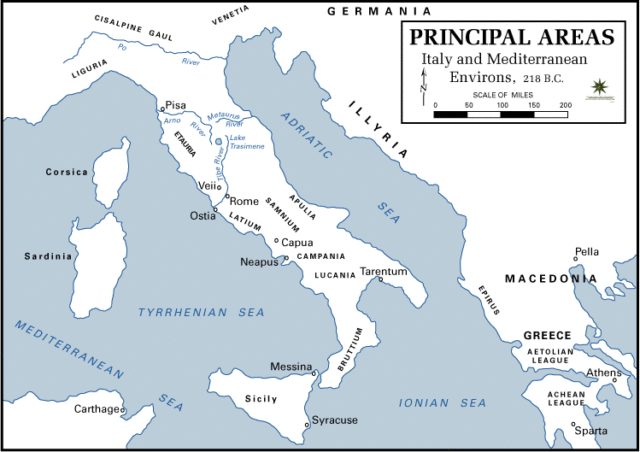
With firm discipline and large numbers, Crassus was able to win a series of victories to push Spartacus’ forces deep into southern Italy. Spartacus still had over 50,000 followers but was now trapped in the “toe” of Italy. All attempts at finding or paying for ships failed.
At this point, two other Roman armies had just arrived or were almost to Italy. One of these was under the famous Pompey the Great. Crassus was already a wealthy man and sought his own martial fame, so he sought to gain a decisive victory before Pompey could swoop in. Spartacus hoped desperately to break out of southern Italy or at least win time to get ships.
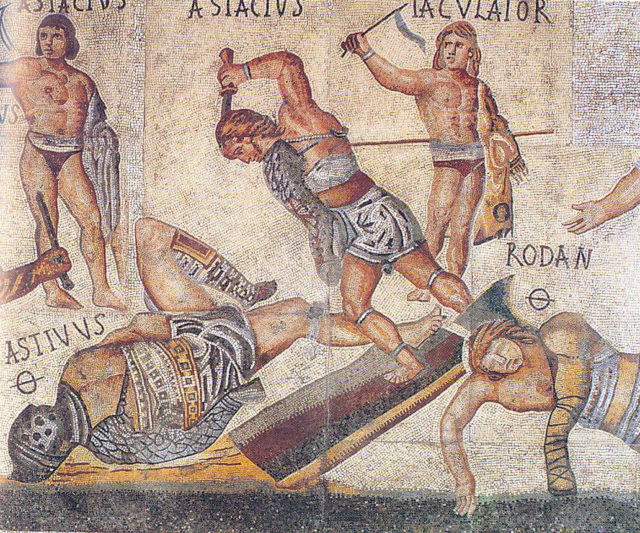
Spartacus tried to strike a peace deal with Crassus, but negotiations quickly failed. In a symbol of his resolve to fight or die, Spartacus had his horse brought to him in front of his followers. He promptly slew it, to the shock of his men. He supposedly said that if they win the coming battle that he will have plenty more to choose from, and if they lose he would have no need for a horse.
With the two forces set for battle, Spartacus started with widespread skirmishing attacks with multiple groups. Spartacus broke through the wide line of fortifications and burst through the other side of Crassus’ formation. Several separated slave groups numbering in the thousands were left behind in this move and lacked the coordination to attack all sides.
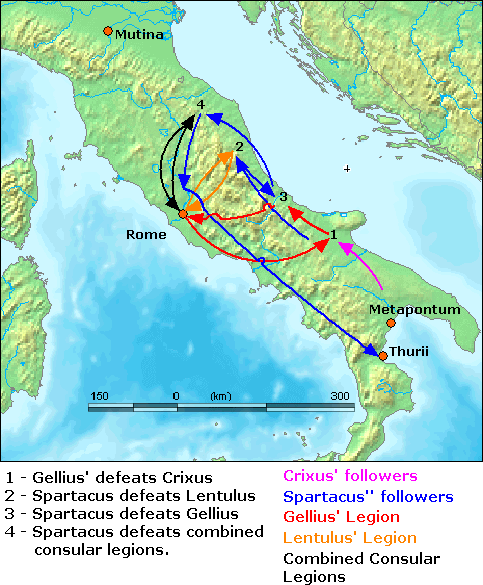
The separated groups were largely annihilated, though they fought fiercely. Many of the groups fought so hard that they routed sections of the Roman army and had reinforcements brought in. Spartacus’ troops were now running from the battlefield, perhaps hoping to completely escape. Some groups turned back to lash out at the pursuing Romans and inflicted many casualties.
Finally, Spartacus and his forces saw the futility of another retreat and the whole force turned around to face Crassus and his legions at the banks of the Siler River. In this last full engagement, the forces were fairly equal; Crassus may have had 30-40,000 trained legionaries, probably less as men were still occupied or exhausted from the earlier fighting. Spartacus likely had 50,000 or more men, tired and bloodied, but fighting for their lives.
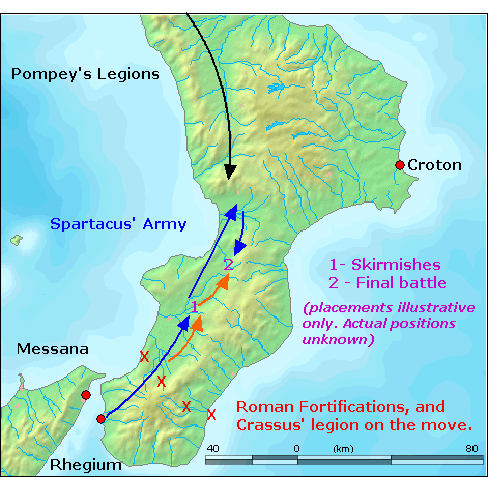
The clash lasted quite a while, with gladiators bravely fighting against the wall of Romans. Many of the slaves were killed fighting to the death. Eventually, the battle broke, 6,000 slaves were captured and 5,000 escaped. Spartacus led a long and inspiring rebellion but was ultimately killed during the battle, though his body was never recovered.
The Romans reportedly only lost 1,000 men, though this figure is almost certainly low to give the Roman people the impression that the slaves were dealt with easily. The real figure was probably much higher, given the long and desperate fight to the death by an army of former gladiators.
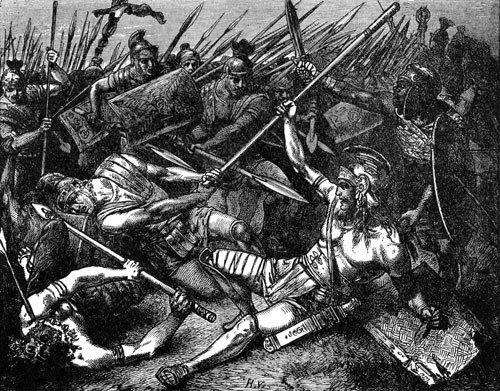
Crassus gained a great amount of fame for finally putting down the rebellion. This would give him the confidence to later expand his career by invading Parthia in the East. That would not end as well for Crassus. The 5,000 escaped slaves didn’t make it very far before they ran into Pompey’s army. All of them were captured and killed, giving the opportunity for Pompey to steal the credit for actually ending the war. The 6,000 prisoners were crucified all along the Appian way from Rome to Capua.
The battle was a firm conclusion to the unsettling Servile War. Slave revolts were far and few between after the war, but it also had some possible positive impact on slaves. Some slaves may have been treated better out of their owner’s fear of another deadly rebellion. Large farms employed more freedmen as well, though these details are hard to track. The rights and treatment of slaves was at its worst during the period before the Spartacus war but steadily improved from then on out.
